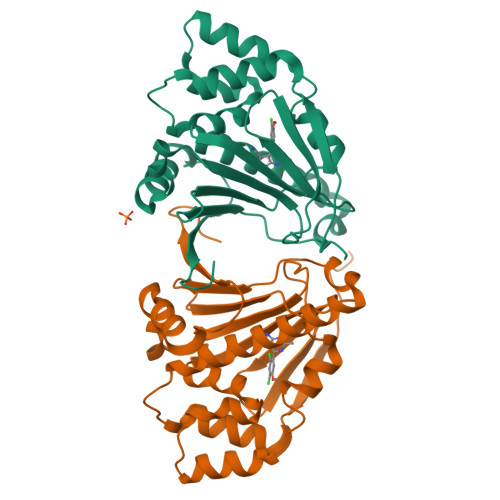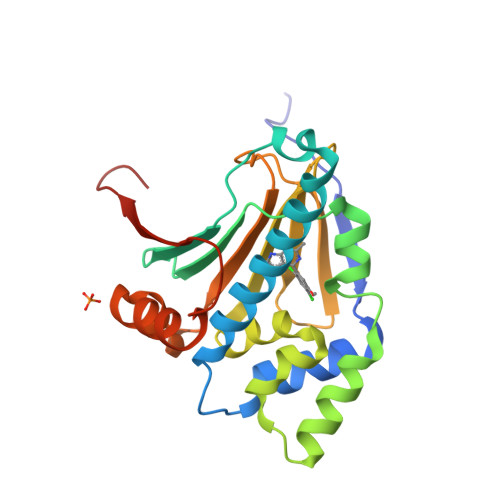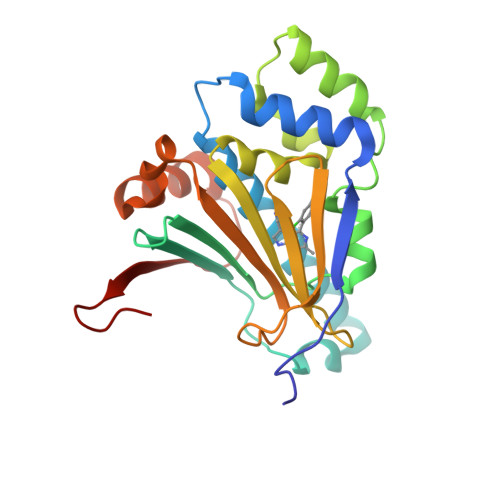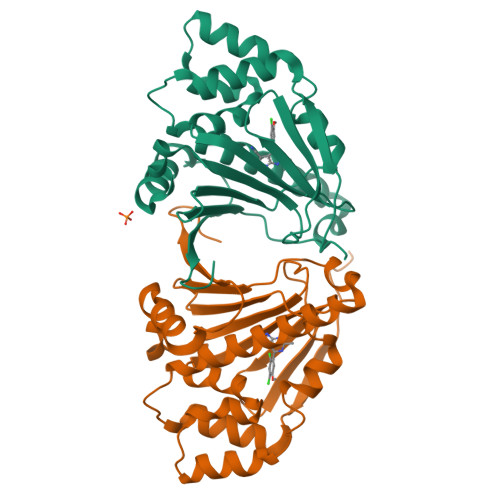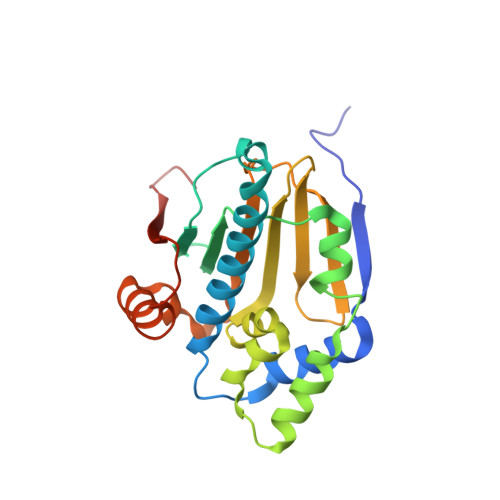Design strategies to target crystallographic waters applied to the Hsp90 molecular chaperone.
Kung, P.P., Sinnema, P.J., Richardson, P., Hickey, M.J., Gajiwala, K.S., Wang, F., Huang, B., McClellan, G., Wang, J., Maegley, K., Bergqvist, S., Mehta, P.P., Kania, R.(2011) Bioorg Med Chem Lett 21: 3557-3562
- PubMed: 21612924
- DOI: https://doi.org/10.1016/j.bmcl.2011.04.130
- Primary Citation of Related Structures:
3RLP, 3RLQ, 3RLR - PubMed Abstract:
A series of novel and potent small molecule Hsp90 inhibitors was optimized using X-ray crystal structures. These compounds bind in a deep pocket of the Hsp90 enzyme that is partially comprised by residues Asn51 and Ser52. Displacement of several water molecules observed crystallographically in this pocket using rule-based strategies led to significant improvements in inhibitor potency. An optimized inhibitor (compound 17) exhibited potent Hsp90 inhibition in ITC, biochemical, and cell-based assays (K(d)=1.3 nM, K(i)=15 nM, and cellular IC(50)=0.5 μM).
Organizational Affiliation:
Pfizer Worldwide Research and Development, La Jolla Laboratories, San Diego, CA 92121, USA. peipei.kung@pfizer.com








